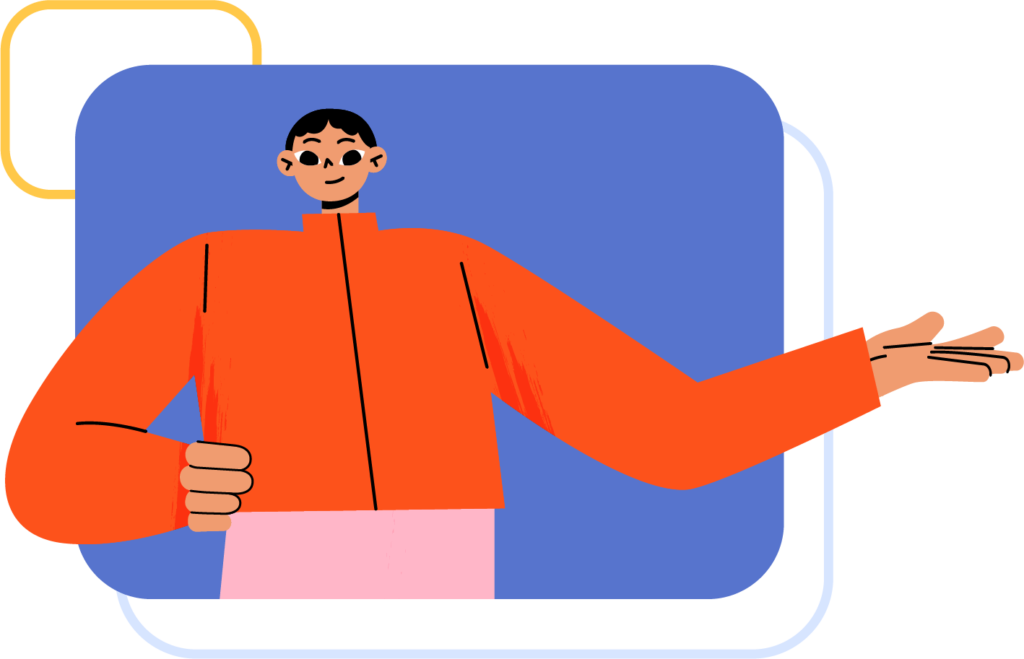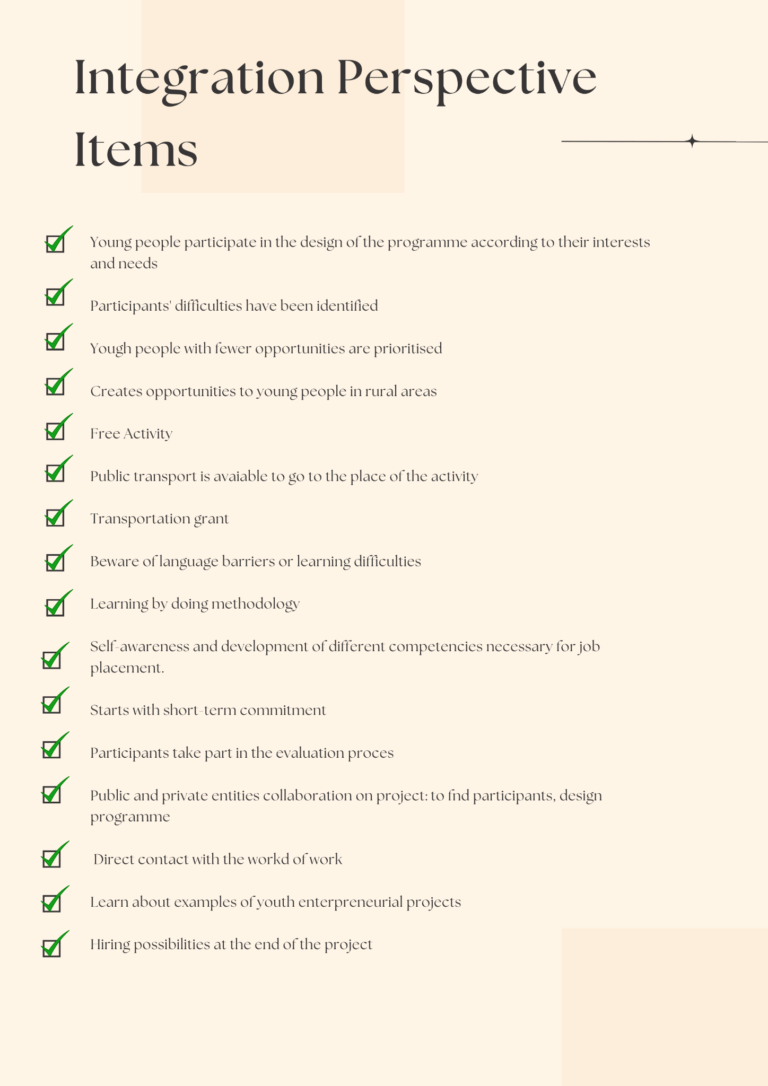Training kit
Circular economy for youth inclusion
Module 1 - About Youth inclusion
A) Social Inclusion
Social inclusion policies aim to correct the structural and multifactorial inequalities that affect the people and groups that make up a society; placing people at the center, beyond material well-being.
A fundamental tool, but not the only one, to promote social inclusion is work. Although it is true that it is a right, as established in article 23 of the Universal Declaration of Human Rights (1948), not all people have the same opportunities to access employment and, unfortunately, decent employment that breaks the situation of poverty and vulnerability. Long-term unemployed people, people deprived of liberty, immigrants, people over 45 years of age, people with functional diversity or mental health problems or young people who have failed at school are in a disadvantageous position in getting and keeping a job.
If for anyone having a job is important, for groups in vulnerable situations, it is not only a means to obtain economic income but also to reverse their situation of vulnerability, integrate and participate fully in society.

B) Labour market inclusión
Lack of access to employment is one of the most determining factors of exclusion. Employment in many cases behaves not only as a factor of integration in economic terms, but goes further. It is not only about having a job and a salary, but it is also a step to occupy a place in society and is directly related to other key integration factors of the personal and social cultural sphere. (Cultural integration, relational network, motivation, mental health, etc.)
Employment, therefore, acts in many cases as a key factor in breaking out of the circle of exclusion of the most vulnerable young people. But what are we talking about when we say most vulnerable young people? There are numerous factors related to vulnerability:
-
Aspects related to employment: Unemployment, submerged employment, job insecurity, unstable jobs, abusive working conditions, lack of work experience.
-
Aspects related to the personal sphere: Mental health, addictions, legal residence status, victim of gender violence, lack of personal skills, criminal record, disability, etc.
-
Aspects related to education: lack of a minimum level of formal training, school failure, training not adapted to the needs of the labor market, lack of necessary support throughout the career path, illiteracy, etc.
-
Aspects related to the social sphere. Lack of relational network, ethnic minorities, discrimination based on gender, sexual orientation, beliefs, ethnic minorities,
-
Aspects related to the economic sphere: Poor households, insufficient income, debts, underground economy, substandard housing.
-
Aspects related to the family environment: Consumption environments, violence, lack of strong family ties, young people without families, etc.
Module 2 - How to set up an activity taking into account the perspective of Youth inclusion
A) Introduction
All of these situations are related to vulnerability and are barriers, often invisible, to participation in any project or activity designed for young people.
In these pages, the objective is to collect a series of issues that we consider useful when overcoming these barriers and being able to design and execute activities from an inclusive perspective. In most cases, these are practical issues, the result of experience in the design and execution of activities for young people in vulnerable situations. Finally, we will give two examples of projects carried out from an inclusive perspective related to the circular economy.

B) Scope and objectives
What are the objectives to be achieved?, is it to do something with the aim of tackling some barrier related to inclusion, or is it to achieve other objectives taking into account the inclusion perspective? For example, we may be talking about a project aiming at enabling young people in vulnerable situations to get access to the labour market, or we may be talking about actions aimed at giving them self-confidence, enabling them to highlight their skills and develop new ones, or help them meet new people, forge links and broaden their horizons.
Key aspects, such as the duration of the project, the human and financial resources invested, etc., will depend on the objectives to be achieved. The important thing is to be honest and realistic when considering the objectives to be achieved and try to match them to the needs, expectations, and interests of the group of people you want to work with.

C) Logistics
Take into account any practical obstacles that might prevent/discourage the target audience from taking part, making it as easy as possible for them to participate, and don´t forget that they can face specific difficulties that other people wouldn’t have to deal with.
The location where the activity takes place is important; it must be taken into account that the majority of young people in vulnerable situations do not have a driving license or availability of a vehicle. Preferably, you should opt for places with access through public transportation. It is also interesting, if considered necessary, to indicate the transport connections to reach the place. This may be done in the material to publicize the activity itself or in a pre-meeting or interview with the participants. If the space where the activity takes place is a rural environment, access via public transportation is often complicated. Assess the option of facilitating accessibility through financing private collective transport. Physical accessibility for those with reduced mobility must be taken into account.
It is always interesting to bring activities closer to those spaces with less opportunities. You must always try to adapt the objectives of the activity to the needs of the environment, for example, if you are trying to carry out a project with the aim of improving the labor inclusion of young people with fewer opportunities, you must try to carry out the project in those neighborhoods or environments with these difficulties.
Regarding the duration of the project, it must be taken into account that many young people in vulnerable situations may have difficulties when it comes to committing to the long term, due to different causes, many of which are related precisely to their vulnerable situation. The duration must always be justified based on the objectives to be achieved, however, it is advisable to always start with short-term commitments that allow “hooking” young people with whom we will then possibly work in the long term. In projects planned for a longer duration, it must always be taken into account that there may be cases of withdrawals throughout the project; these withdrawals may be covered with new incorporations or adapting the project to fewer participants. This issue is often problematic for many entities that work with young people, since it is common that, due to external and financing requirements, projects have to be justified with a minimum number of participants and several withdrawals can jeopardize the sustainability of the project. For this reason, if this minimum number exists, it is always important to exceed it with a certain margin or have the possibility of substituting participants.
It is also relevant to think about the time of year in which the project will be developed, which will also depend on the objectives and the target of young people we are addressing. For example, if we propose a project to work with young people outside the educational system and in which one of the objectives is for the participants to return to their studies, the project must be proposed on specific dates, ending with the beginning of a new academic year so that can have continuity. In this case, for example, it would also be interesting for the start of the project to be months after the start of the academic year, in order to include those young people who leave their studies in the middle of the school year.
In the case of proposing an activity online, digital barriers, lack of digital Skills or lack of accessibility, must be taken into account. If you want to plan an online project from an inclusion perspective, you must always consider the need to provide prior training, equipment and even a space from which to participate.
The registration process for the activity must be facilitated. Avoid complicated forms as much as possible and provide different ways to sign up: telephone, in person, WhatsApp, online. Sometimes, due to the nature of the projects, certain documentation is needed to sign up (personal identification document, youth guarantee certificate, unemployment benefit…). The difficulty of accessing this type of documentation and having difficulties signing up often discourages participation. People charged with carrying out the activity must take this into account to facilitate these procedures as much as possible, since many young people in vulnerable situations lack certain tools that are sometimes taken for granted: Help from a family member to obtain documentation, digital skills, language barriers, technical language, etc. It is always recommended that potential participants have a clear reference person to be able to inform them about the project and accompany them in the registration process

D) Partnership and collaborations
Partnerships are really important and can help give a most important scale to the project. Partners can help build the project by bringing their expertise on issues about which you lack knowledge: for instance, if you would like to welcome people with disabilities or disorders (mental, psychological), it’s important to work with specialists who know their needs and how to integrate them.
Having partnerships is also a way of getting more resources (financial resources, infrastructure, equipment, etc.) and add another dimension to the issue of communication, having their own contacts and means of communication. On the inclusion of young people, it is possible to establish partnerships with public or private organisations that work with young people at risk of exclusion (employment office, associations…) to reach this public more easily.
However, if you want to involve partners, take the time necessary to talk about the project and share each one’s points of view, and involve them fully in the project (they have to feel that they provide added value, so that they can really get involved). Make sure they share your values and are trustworthy. That is why you need to surround yourself with people who know how to work on these issues (with young people, with excluded groups, or who have experience in the type of project you are launching).
Involving partners means asking yourself about your own weaknesses and needs: What are your organization’s strengths? On what points would you need the help of experienced people? Are you prepared to deal with different ways of doing things and different methodologies, and possibly to change the way you build your project?

Resources Budget – Economic aspects
Budgeting for a project should be done at the very start of its construction to estimate costs and enable the project to be carried out effectively. The most important condition for setting up a project aimed at including young people is to guarantee that the service offered is free of charge. The financial issue can be a real obstacle for this type of public, who are often in a precarious situation. Requiring a financial contribution would deprive many young people of the opportunity to participate. If the activity requires the use of equipment, it should, wherever possible, be made available to the public rather than requiring them to obtain it themselves.
The financial aspect can be an obstacle to carrying out a project, so it’s important to think about the different ways of raising funds. Setting up a project for young people experiencing exclusion has a strong social dimension and can be considered to be in the public interest. The organization can approach local public authorities to obtain public subsidies to build the project (through a call for projects, for example). The financial issue is also one of the reasons why working with partners can be so important.
Especially in projects of a certain duration, it must be taken into account that the cost of transportation to the place of the activity can be an obstacle to participation. Whenever possible, it is highly recommended to offer the possibility of financing this cost, either by providing the transportation service free of charge or by making it possible for participants to apply for a transport grant. If an individual transport grant is chosen, there should be the possibility that a portion of the grant may have to be advanced before starting the activity, as many participants may find it difficult to advance these funds out of their own pocket. Many training programmes have transport grants, but these are given to participants at the end of the training, which makes it difficult to include people in a more vulnerable economic situation.

Participants
The more you want to be inclusive and reach the greatest number of people possible, the more limitations you will have to overcome to welcome them in the right conditions. Study the limitations that may prevent certain people from participating in the project and try to eliminate the barriers.
There are indeed many different profiles of young people in situations of exclusion. They don’t all have the same needs, and some activities are suitable for some but not for others. The question to be asked is whether the project targets a particular problem linked to a specific target group, or whether it aims to be as inclusive as possible. In the second case, it is important to consider how these different profiles can be brought together, while respecting each other’s needs.

Design activity and conduction
The development and implementation of the activity is at the heart of the project. It is developed taking into account the various issues involved in setting up a project (target audience, objectives, budget and staffing limits, etc.).
In the case of a project linked to the problems of young people experiencing exclusion, the activity has to be both adapted to a young audience and designed to combat their social exclusion. The activity must also meet the overall requirements for a successful project: it must be useful, innovative and effective.
Some advice for a project involving young people:
-
Activities that promote cohesion in the group, to help young people feel comfortable
-
Innovative activities that are different from what is usually done
-
Activities with a general framework to help them begin
-
But also, flexibility to give them freedom and enable them to be active, gain confidence and share their own ideas.
-
Possibility of integrating them into the project methodology (communication, building of the activities, fund-raising, etc.) to give them a sense of responsibility and involvement, and to help them develop professional skills.
-
The sessions should not be too long so they don't get boring, + should be frequent enough to keep the group dynamic and interested
-
Inclusive activities: take account of all types of audience and their needs (physical and mental disabilities, language issue if they don't speak the same language, social and religious background...)
-
Conduction: the youth worker must accompany without imposing
Ensuring that everyone finds their place in the activity. Be aware that certain profiles may require more personal and in-depth monitoring
A good way to start a project or activity can be to create as a group some ground rules agreed upon by all to develop the activity. These shared norms must serve to establish behavioral guidelines and a climate of safe and inclusive space.

Communication
Carrying out effective communication is essential in different phases of the project. Generally, communication at the beginning will be aimed at attracting potential participants to the project, while in the final phase, it will focus on communicating the achieved results.
During the recruitment phase, there is no single effective approach; it will depend on the target audience we want to reach. However, as a general rule, it will always be advisable to opt for various different dissemination channels.
On one hand, it is often effective to reach young people using their communication channels (social networks: instagram, whatsapp, tiktok…). If the budget allows, online advertising. Think about attractive content for young people .If possible, focus on communication for young people by young people, involve the interested public (idea of involving young people in the communication campaign to better reach them). Furthermore, prioritizing communication by young people for young people enhances authenticity. Involving them actively in our campaigns empowers their voices and perspectives, making our initiatives more relatable and impactful. Creating compelling and visually appealing content is crucial. This means crafting material that resonates with their interests and sensibilities, ensuring it’s not only informative but also captivating.
On the other hand, networking is essential to reach certain profiles. As mentioned earlier, it is important to collaborate with other stakeholders operating in the area: associations, NGOs, educational institutions, foundations, public entities, companies, etc. Explaining the project in person is also necessary. A good practice that often works well is to involve participants from previous editions in the dissemination, allowing them to share their experiences and allowing potential new participants to relate to them.
Similarly, if the budget allows, it is always advisable to create physical materials such as flyers or informative posters. Both in digital and physical documents, essential information should always be clearly reflected to encourage further inquiries, such as the project’s cost-free nature, expected outcomes, the possibility of applying for transportation grants, etc

Evaluate/ results
Evaluating a project is an essential step to measure the success and to highlight areas for improvement. It serves both to emphasize on what is working and to point out difficulties so that they can be understood and corrected. Evaluation is important for the project team, but also for the partners. It is also essential for reporting to potential public funders, who require a report on the project.
There are two dimensions to project evaluation: evaluation of the process of setting up the project, and evaluation of these results and effects on the target audience. It is based on a comparison of the objectives targeted and the results obtained.
In projects of a certain duration, it is always advisable to include a mid-term evaluation of the project in which the opinion of the young participants is taken into account, with the objective of being able to intervene, if necessary, in the development of the project. Depending on the nature of the project, this evaluation may be done in different ways: anonymous questionnaire, open group debate, individual interviews, etc.

Module 3 - Examples of best practices and how to replicate
Labour market inclusion and circular economy (Emprégate em verde – Paideia)
A) ABOUT THE PROJECT
The Emprégate en Verde youth employment program was carried out in a rural area of the province of A Coruña (Spain), through a public and private collaboration between several entities: Asociación de Desarrollo Local Deloa, Fundación de la Escuela de organización industrial, Fundación paideia Galiza and the company O Fogar do Santiso. This project was born with a double objective:
-
Improve the labor skills of young people, promoting equal opportunities, giving priority to the participation of young people without training, at risk of exclusion or living in rural areas.
-
Promote critical thinking and commitment to innovative projects based on environmental sustainability and the circular economy through experience.
The design of the program comes from a participatory process that Fundación Paideia carried out in 2020 during the Covid19 confinement. As we had to stop our activity, we took the opportunity to collect information about the needs expressed by the young people we work with. One of the most repeated issues was the need to try, even briefly, different sectors in a practical way to be able to carry out an essential self-knowledge exercise to be able to think about their future career.

B) INTRODUCTION
“Emprégate en verde” is an employment project with a practical methodology based on direct contact with the world of work. The project was designed and executed together with a leading company in sustainable agri-food production and gastronomy in Galicia. A practical itinerary was designed through 5 differentiated professional sectors: organic garden, kitchen, bakery, warehouse activities and room service, allowing young participants with little or no professional experience to approach different types of work, facilitating self-knowledge and work. in your future professional goal. In addition to this practice in the company, the program transversally includes a series of training courses in which generic employment skills are worked on. The fact that part of the training has been carried out in the environment of a real, operating company allows participants, with little or no previous experience, to have real contact with the world of work. In our opinion, this is key to adjusting your expectations and making the correct transition from a regulated training environment to the world of work. Although it was not set out as an initial objective, the evolution throughout the training of some of the participants led at the end of the project to a job proposal from the company.

C) PROGRAM
This project lasted 2 months and involved 15 young people between 18 and 29 years old, distributed in 4 training blocks. Alongside the group training and the practical part, each of the participants was individually monitored throughout the project. The programme is divided into 4 different blocks, 1) generic employment skills and personal development, 2) Knowing the trades from the inside, 3) Opportunities in the environment, 4) Group follow-up. When the timetable was drawn up, the blocks did not follow each other chronologically.
Block 1 - Generic competences for employment and personal development.
The first two weeks of training we started with several sessions focused on self-awareness, motivation, gender in the labour market and group cohesion. These first sessions are important as the participants did not know each other, so it is important to create spaces where they can work on positive bonds before starting the practical part in the company.
At the end of the practical part, several sessions of this block are included again, focusing on job search, interview preparation, selection processes and work on the individual plan for labour market insertion.

Block 2 - Getting to know the trades from the inside - Internships in a company
In the second block, the participants rotate through practical training in different trades. Within the premises of the partner company, the group of young people is subdivided into smaller groups of 3-4 people, who will rotate through 5 different trades every week. When rotating, it is important that the groups change and that they can change partners. Learning to work with different people is a major learning experience.
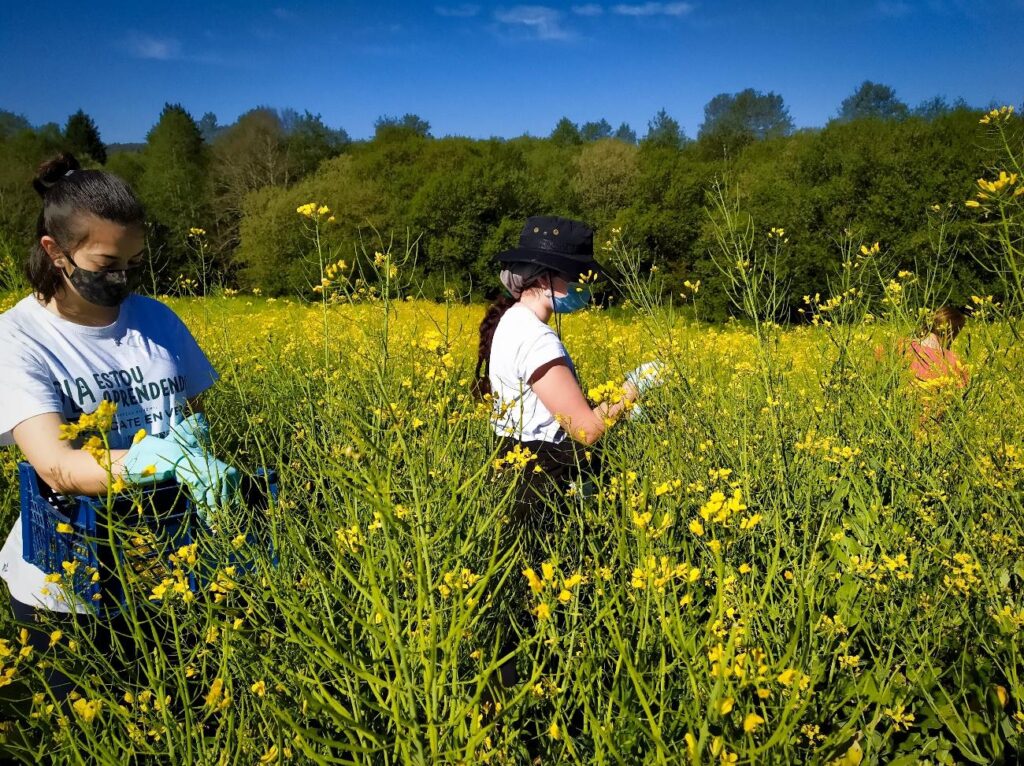

Block 3 - Opportunities in the environment-Visits to projects and companies
In a third training block we included visits to projects related to the circular and sustainable economy. Some examples of the visits carried out are: A youth cooperative dedicated to the production of organic cheeses, a community of forests that is a reference in the multifunctional use of forest resources or a company producing organic teas and infusions.
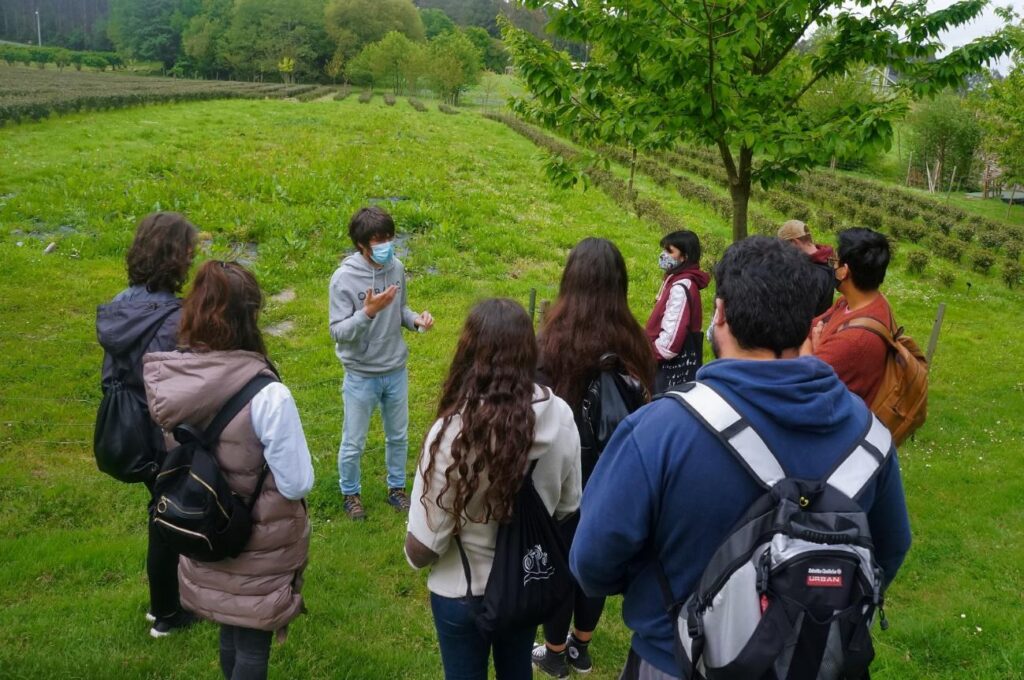
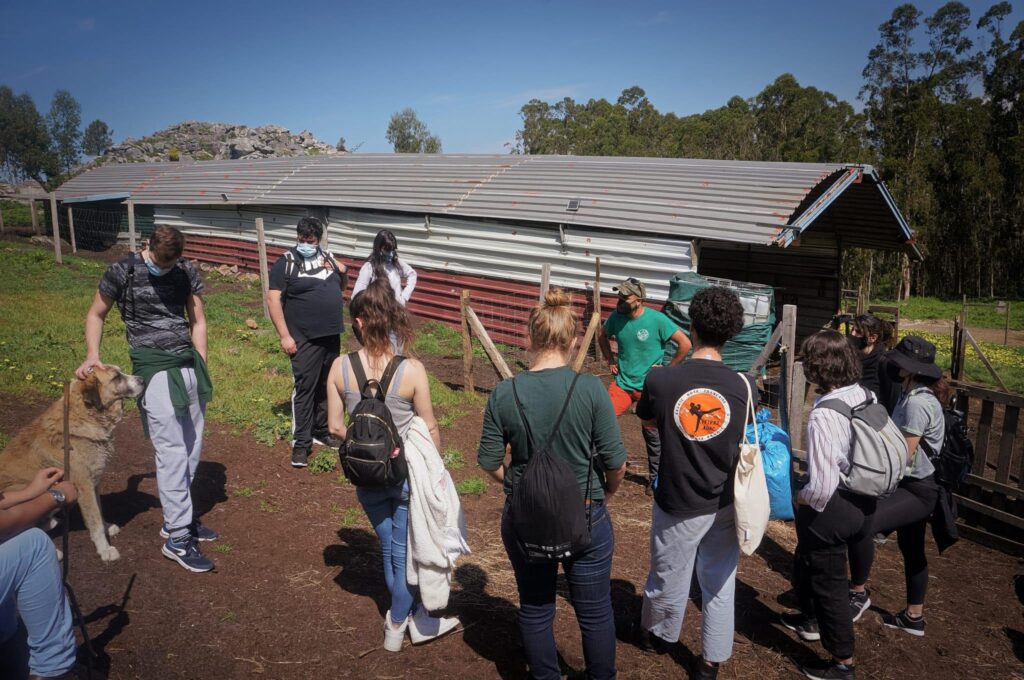
Block 4 - Group follow-up
Presentation day: Presentation of the project, clarification of doubts, review of the calendar, group dynamics, etc.
Intermediate evaluation: Intermediate meeting between the organising team and the participants. In this session we include some dynamics to evaluate and discuss different aspects such as the relationship between the group, the most valued aspects of the programme development, changes that could be made to improve the programme, individual self-evaluation in the practical part, difficulties detected, etc.
Evaluation and closure of the training: The participants make a qualitative assessment of the programme through an open dialogue among the group. Finally, the participants also complete an anonymous evaluation in the form of a questionnaire.

Block 5 - Individual follow-up.
During the training, individual work is carried out with the participants. As a general rule, the contents and the hours of individual work vary from case to case. There are at least 10 hours of individual interviews starting from the selection phase until the end of the training.
Example of the project schedule:
D) INTEGRATION PERSPECTIVE
What issues have been taken into account in adopting an inclusion perspective in this employment project?
E) LESSONS LEARNED
A particularity of this programme is the rotation through different job positions in a short period of time. Our experience is that this practice has facilitated an exercise of self-knowledge of the participants, identifying and working on their competences, strengths and weaknesses, which is a fundamental starting point when working with the objective of job placement.
On the other hand, Emprégate en verde is a job placement project for young people without higher education who are looking for a job. At the same time, the aim is also to show young people different initiatives built on the principles of the circular economy and that value the natural resources of their environment. The reality is that most of the participants in this project do not have, beforehand, an interest in issues such as circular economy or sustainable gastronomy, but this interest is created through practice and being able to see first-hand real projects and initiatives that work and create wealth in their environment. In our experience, any work integration project has to be built together with the real world of work, but the choice of companies and the values on which their activity is based is important, as it is not an unimportant choice. In our opinion, the choice of this “key partner” from the business world can be the key to the creation of future projects that combine the objective of integrating young people with fewer possibilities into the labour market while promoting and making visible the circular economy, not only as a desirable type of economy, but also as a real one.

Social inclusion and (related to) circular economy (IMPACT HUB)
Innovation Grants for Liepaja Students (IGLS)
ABOUT THE PROJECT
Launched on September 1, 2022, the IGLS “Inovāciju granti Liepājas studentiem (Innovation grants for Liepaja students)” (Nr. 1.1.1.3/21/A/004) project is a pioneering initiative led by Liepaja University, in collaboration with Impact Hub, Liepaja City Education Department, Liepaja State Technical School, and the Liepaja University Development Fund. This 15-month program, running until November 30, 2023, is designed to ignite the entrepreneurial spirit and connected feeling within students across Liepaja.
Objectives: The core mission of IGLS is to help young people understand different career options so that they can make informed decisions in choosing their profession in the near future. Also foster entrepreneurial capabilities among students, providing them with substantial professional experiences across various industries. Additionally, the project serves as a platform for students to conceptualize, develop, and initiate their own business ideas and develop their skills during internships in different companies.
Who Can Participate: Students from all educational levels – ranging from those in general secondary and vocational institutions to university students in Liepaja.
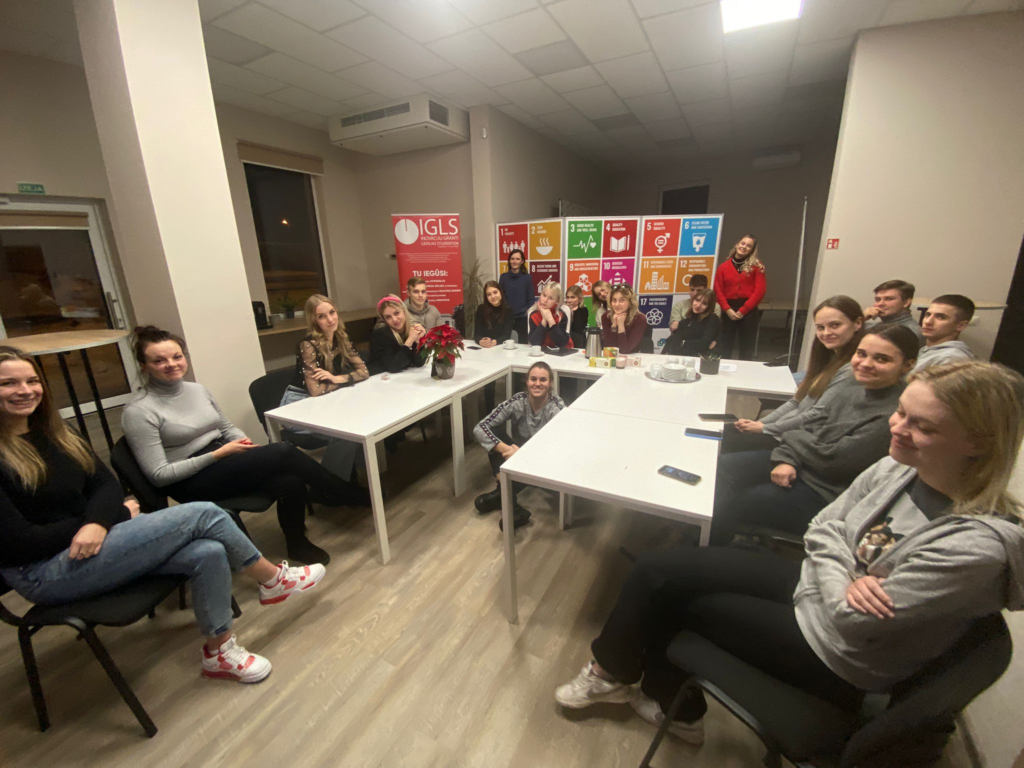
Program Structure: IGLS is structured into four six-month cycles. Each cycle involves four months of practical engagement, where participants either develop their own product or engage in an internship with a business. Participants are encouraged to apply either individually or as teams, and are supported in forming workgroups for product or service development.
To apply for the IGLS program, participants initially submit their own business ideas or select from a range of internships offered by partnering businesses. They present their chosen project along with a detailed plan for the next six months. Throughout the program, regular check-ins and a mid-term report in the form of a presentation after three months help track their progress. At the program’s conclusion, all participants showcase their accomplishments, highlighting the skills and knowledge they’ve developed. This final presentation offers a comprehensive view of each participant’s journey, underscoring the practical experience and personal growth achieved during the program.
Block 1 - Choosing and Sharing Ideas
At the very start, each participant decides on a business idea they want to develop or chooses an internship in a company. They then present to the jury their choice in a simple way, explaining what their idea or internship is about and what they hope to achieve by the end of the project. They can share in teams or individually develop their business ideas. Practice opportunities are chosen individually by everyone. Mostly for business ideas there are teams of two or three people.
Block 2 - Making Plans
After choosing, they begin to map out their project. This involves setting small goals and planning how to achieve them step by step. They learn how to organize their ideas and make a timeline for their work. The plan is created with the help of mentors after a master class on project planning.
Block 3 - Learning and Meeting Experts
During all six months, there are many workshops and classes. Participants learn about business, how to work with others, and how to solve problems. They meet people who have experience in business, who give advice and share their own stories. Also, twice a month, the participants go on a tour to companies in order to find out what everyday life is like for specific professions and specific companies, so that they can make informed decisions about their career later in the future. It is necessary to pay attention to every participant. Someone may feel insecure or do not feel safe in the community, and there are also young people with disabilities, so you should always make sure that there is a mentor nearby who can act in a specific situation.
Block 4 - Doing the Work and Checking Progress
For six months participants are working on their actual projects or begin their internships. They have regular meetings with mentors who help them stay on track and improve their work. They discuss any challenges they face and how to overcome them. At this moment it is very important to understand the youngster’s needs. It is likely that the young person is insecure or belongs to the NEET group, so it is important to find a suitable mentor and create a friendly and safe environment.
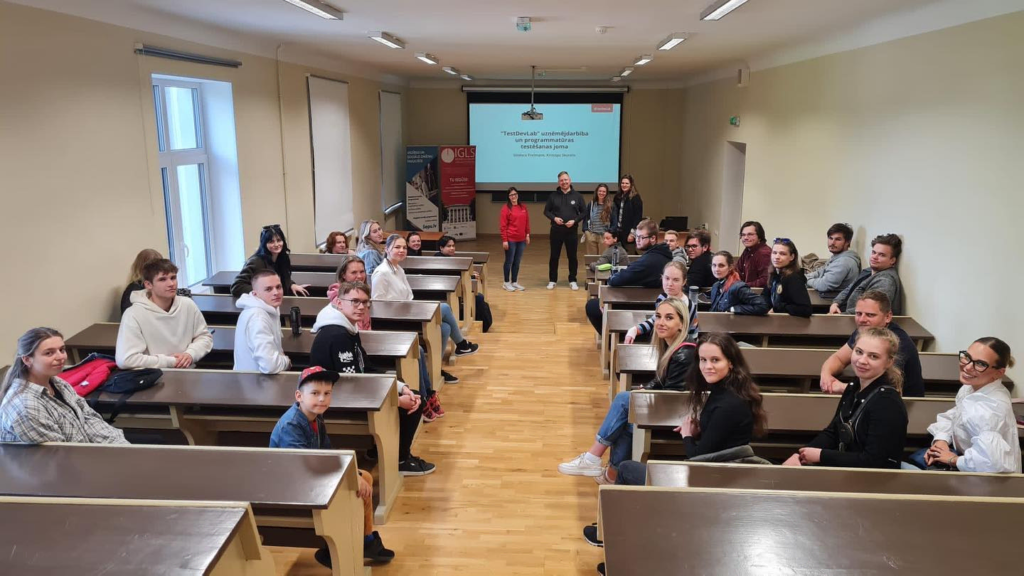
Block 5 - Final Presentation and Looking Back
In the final month, everyone shows what they have done. They talk about their project or internship, what they learned, and how they grew. They share their successes and the difficulties they faced, and how they solved them. This is a time to reflect on the entire journey and the skills they’ve developed. In the final report, the jury evaluates the participants and awards cash prizes to the most successful and active young people who have achieved visible growth and carried out an influential project.
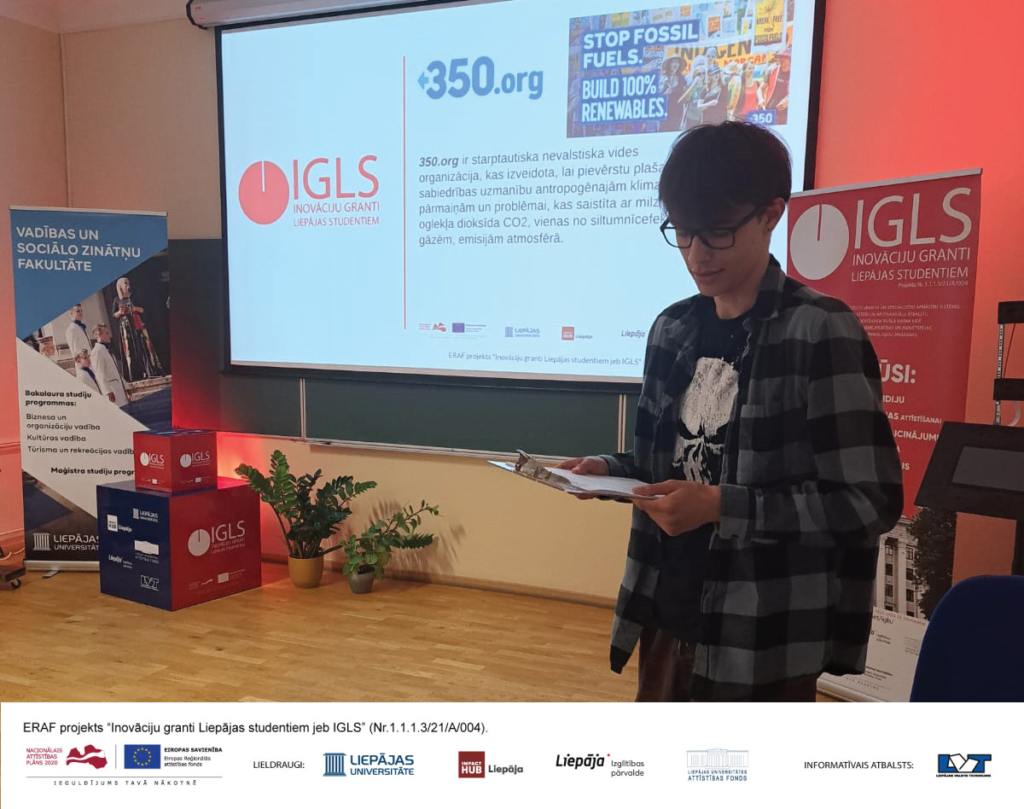
Support and Opportunities: During the program, participants were eligible for a monthly scholarship of 200 Euros. Additionally, they received financial backing for the realization of their business ideas, offering a unique chance to test the viability of these ideas or contribute as a team member to the development of others’ business concepts.
There is a huge support from mentors to make youngsters include and more confident about their abilities. In each of the cycles, there was always a young person who has a much harder time fitting into the environment, opening up to ideas and using his potential. In these cases, young people are evaluated at the beginning and those for whom individual mentoring could provide great support in their growth are identified.
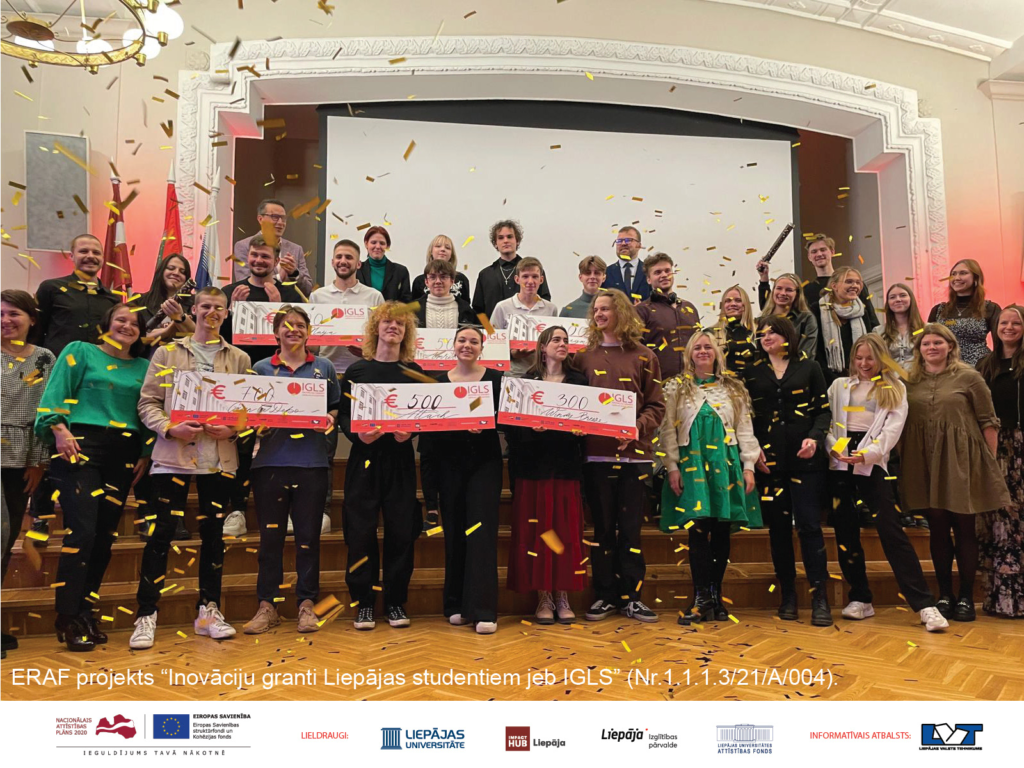
Underlying Vision: This project is a key component of the “Growth and Employment” operational program, aimed at enhancing the research and innovative capabilities of Latvian scientific institutions. By investing in human resources and infrastructure, IGLS not only nurtures new talent but also contributes to the broader goal of increasing Latvia’s ability to attract external funding.
Social Inclusion: The project included students from different backgrounds. Everyone had the same chance to join, no matter where they came from or what they believed. This made the project rich with different ideas and helped everyone learn more.
An important part of IGLS was its focus on including students and businesses from rural areas, bringing diverse perspectives into the program. A notable example of the project’s commitment to social inclusion was one participant who interned at a business working with deaf people. This experience was so impactful that the participant continued to work there after the project ended. This highlights how IGLS successfully promoted social inclusion and created lasting impacts on the participants and the community.
Workshops: During the IGLS project, participants engaged in a comprehensive learning process, with approximately two workshops conducted every month. These workshops covered various aspects of business and personal development, equipping students with essential skills and knowledge. Through interactive sessions, expert-led discussions, and hands-on activities, the participants were able to delve into the fundamentals of entrepreneurship, business strategy, and self-improvement. This structured approach to learning ensured that by the end of the project, each participant had gained a robust set of tools to apply in their entrepreneurial endeavors and personal growth.
How everyone can access them easily and feel safe
In addition, special attention should be given to NEET (Not in Education, Employment, or Training) youngsters by offering tailored guidance and mentorship that addresses their specific needs and challenges. Engaging them with real-life success stories and hands-on experiences that resonate with their interests can significantly enhance their motivation and participation in the workshops. Be aware to pay more attention to how they feel, creating a supportive and understanding environment where NEET youngsters can openly express themselves and feel valued, further encouraging their active engagement and sense of belonging in the workshops.
LESSONS LEARNED
After the project, when re-evaluating young people, we can see that the project and its content have promoted entrepreneurship in the participants, also the participants have taken various tests for self-discovery, improved various skills, identified their favorite vacancies in the labor market. One of the most important findings is that the participants, after getting to know the environment, have understood in which professions they do not want to work and have decided to strengthen their knowledge and study so as not to end up in an industry that “scares/does not suit his interests” them.
As organizers, we were very happy that through the progress and initiatives of this project, many participants were able to look at their ideas through the prism of the circular economy, and we achieved this best with an interactive game, using the business ideas created by the participants themselves. Through the workshop of this game, many young people began to understand how they can change their product and some even changed their business direction.
Another important insight is definitely that it is much easier for the participants to understand any process (whether you want to become an entrepreneur or an employee) if it is shown with a practical example.
Last but not least – we are grateful that we were able to integrate into this project and create interest in those young people who come from socially disadvantaged groups.

